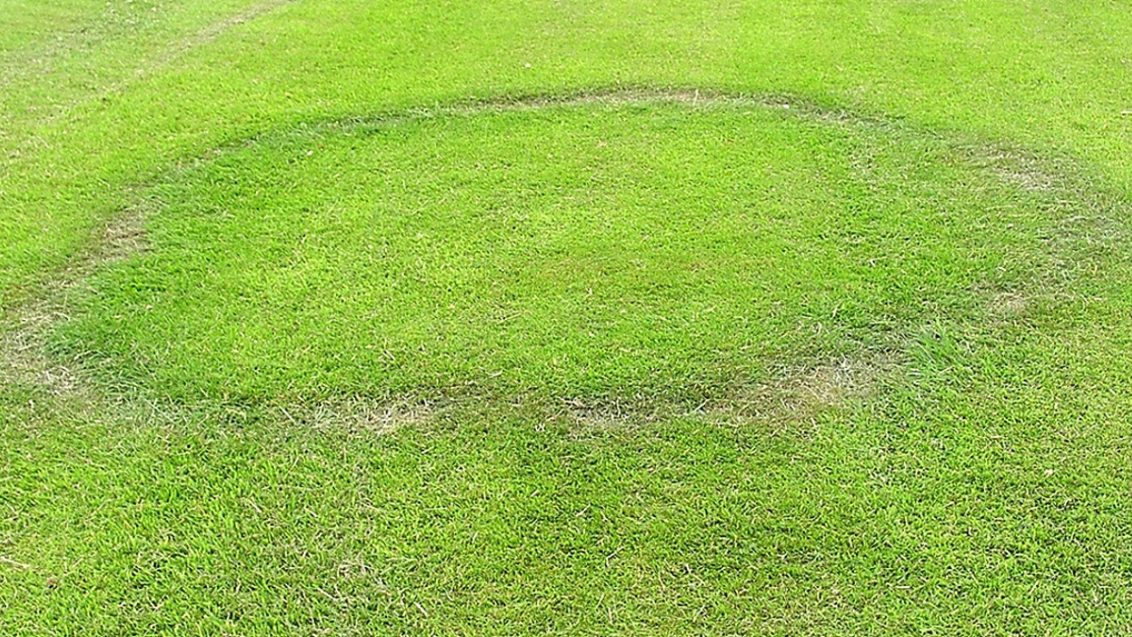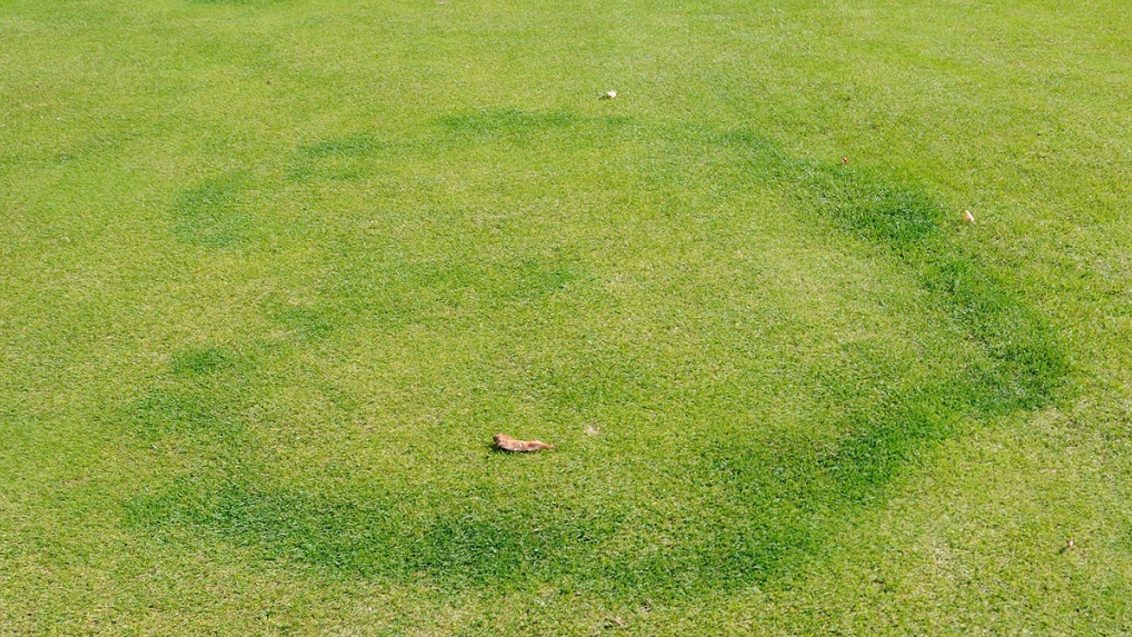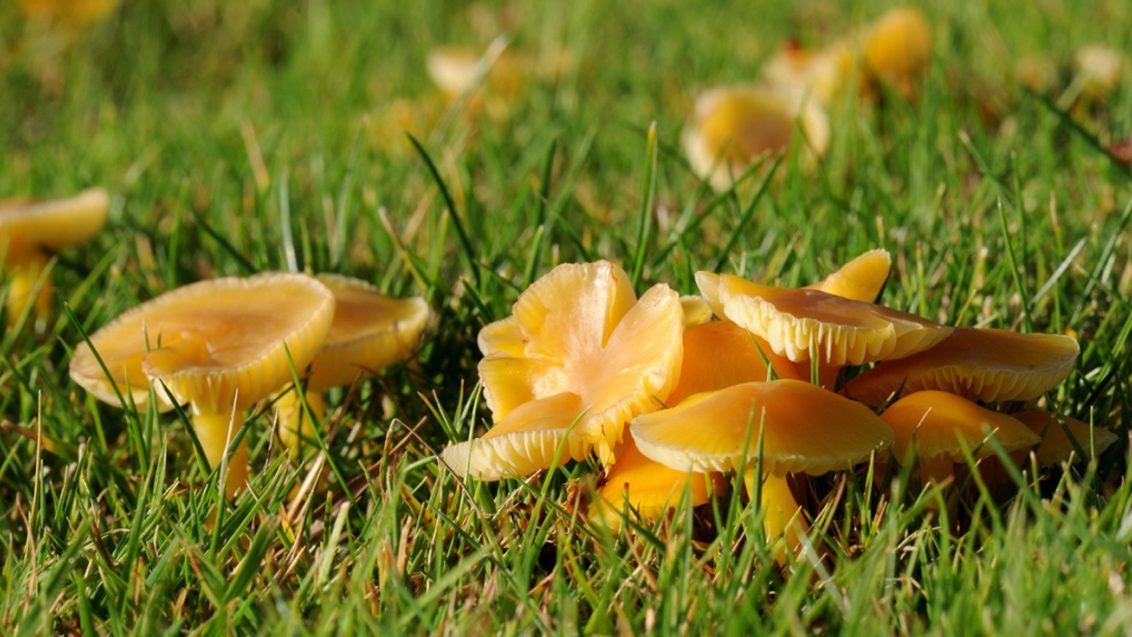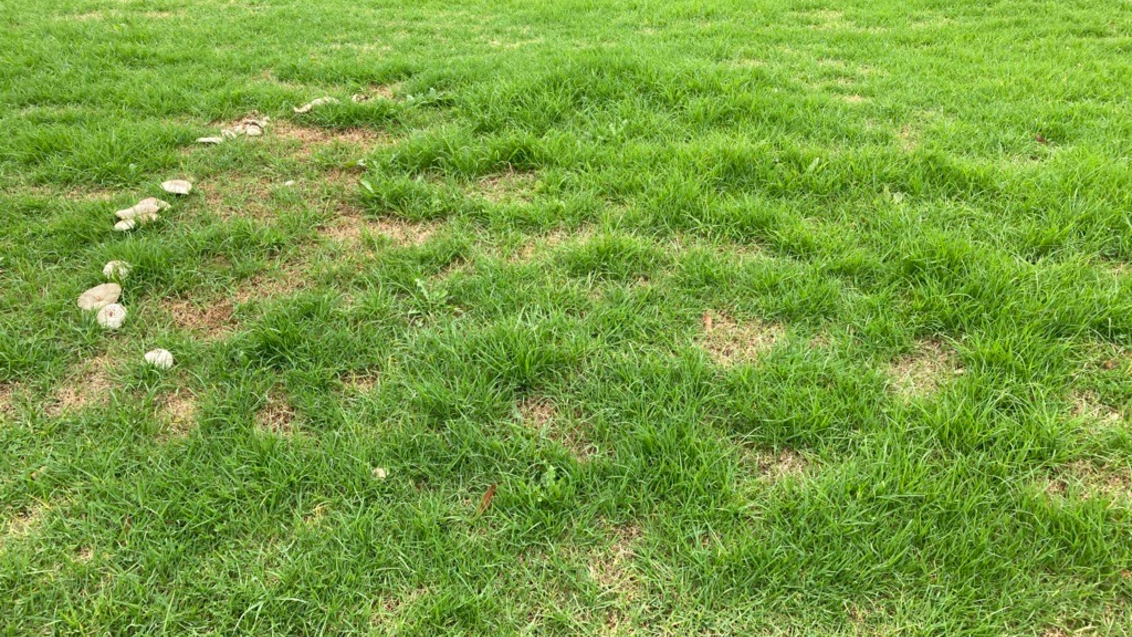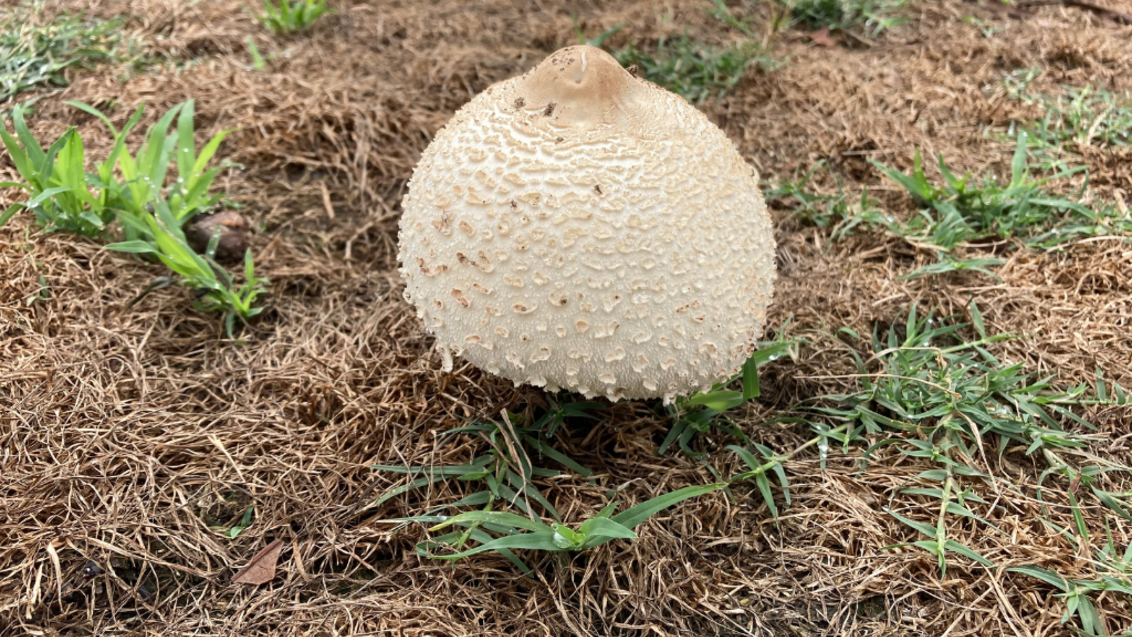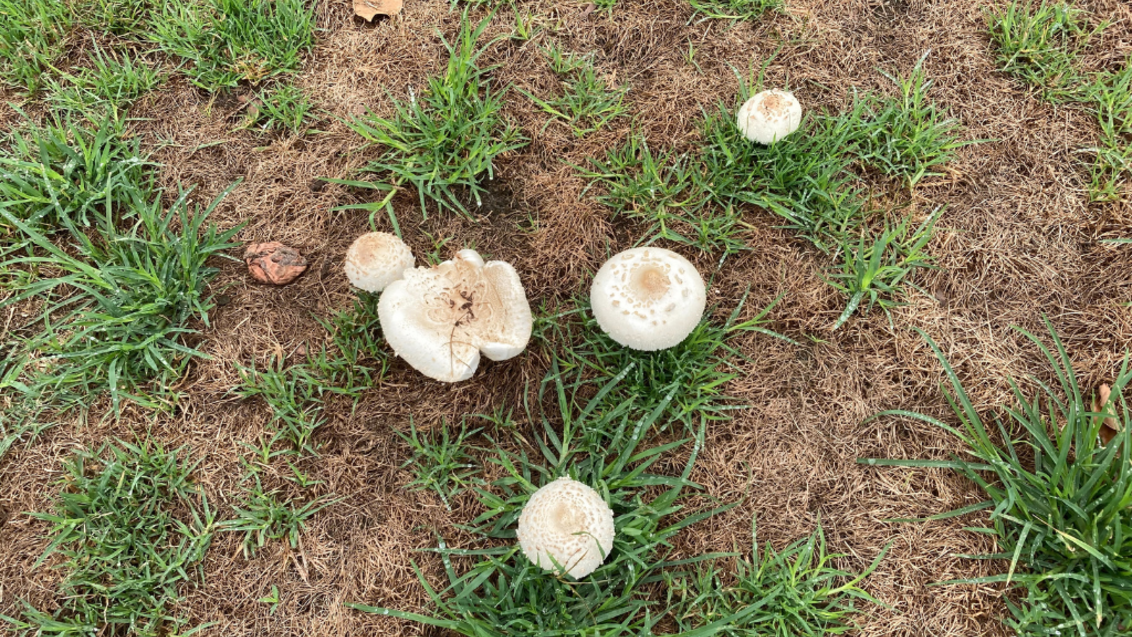Fairy Ring
Disease
Susceptible Turf
Occurs in all turfgrasses.
TYPE I Fairy Ring
Symptoms: Damaged or dead turf from drought stress. They may have fruiting bodies present.
Causes:
- Hydrophobic (water-repellent) thatch and soil.
- Accumulation of ammonium to toxic levels.
- Release of hydrogen cyanide or other toxins into the root zone.
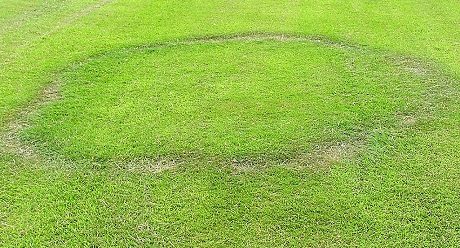
Type II Fairy Ring
Symptoms: Rings of dark green or quickly growing turf. These symptoms usually occur early in the season, and indicate that more severe Type I symptoms may follow. They are most evident in under-fertilized turf. They may have fruiting bodies present.
Cause:
- Release of nitrogen and other nutrients into the soil.
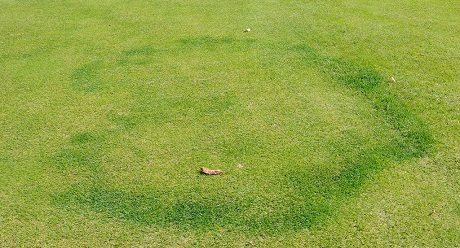
Type III Fairy Ring
Symptoms: Mushrooms or other fruiting bodies produced in a ring with no visible effect on turf growth. They are most common during periods of wet weather preceded by drought.
Causes:
- Mycelial mass buildup around the outer ring
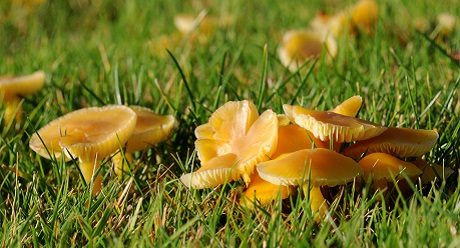
Conditions Favouring Disease
- Fairy Rings are more severe on light soils, which have low fertility and low moisture content.
- Turf with a significant thatch layer.
- Drier areas have significantly more Fairy Rings than higher rainfall areas.
Management Tips
- Avoid using root zone mixes with high levels of undecomposed organic materials.
- Reduce thatch by vertical cutting.
- Core aerify.
- Irrigate deeply.
- Use nitrogen and iron fertilisers to mask symptoms on some types of Fairy Ring.
- Use soil wetting agents to help penetrate hydrophobic areas.
General Comments
Fairy Rings are more prevalent and damaging on lightly water and fertilised fairways and lawns than on well irrigated and fertilised turf.
Fairy Rings typically occur in spring and summer, however they can also occur on cool-season turfgrass in mild winter climates.
The most common Basidiomycetes in Australia are species of Lycoperdon; Marasmius; Tricholoma; however there are over 50 causal organisms.
Fairy Ring is a unique disease as its symptoms are not directly caused by fungal pathogens. Instead, the Fairy Ring pathogens cause symptoms indirectly, by changing the chemical and physical properties of the soil.
Fairy Ring can present in rings or arc shapes or irregular patterns. Type II and III symptoms are not devastating to turf, however they do detract from uniformity and can affect playability, and in most cases management is required.
As the causes and symptoms can vary, curative fungicide applications can be unreliable. For the best control of Fairy Ring, a preventative strategy should be used.

